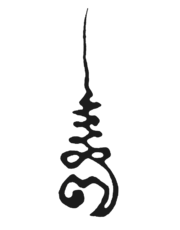| This article needs additional citations for verification. Please help improve this article by adding citations to reliable sources. Unsourced material may be challenged and removed. Find sources: "Ajahn Sao Kantasīlo" – news · newspapers · books · scholar · JSTOR (November 2015) (Learn how and when to remove this message) |
| Phra KhruVivekbuddhakij (Sao Kantasilo) | |
|---|---|
 | |
| Title | Luang Por |
| Personal life | |
| Born | Sao (1859-11-02)November 2, 1859 Ban Kha Khom, Tambon Nong Khon, Amphoe Mueang Ubon Ratchathani, Ubon Ratchathani Province, Siam |
| Died | February 3, 1942(1942-02-03) (aged 82) Wat Amatayaram, Amphoe Wan Waithayakon, Champasak Province (under Thai rules) |
| Nationality | Thai |
| Other names | Ajahn Sao Luang Pu Sao |
| Religious life | |
| Religion | Buddhism |
| School | Theravada, Dhammayuttika Nikaya |
| Lineage | Thai Forest Tradition |
| Dharma names | Kantasilo |
| Profession | Buddhist monastic |
| Senior posting | |
| Students | |
| Thai Forest Tradition | ||||||||||||||||||||||||||||||||||||||||
|---|---|---|---|---|---|---|---|---|---|---|---|---|---|---|---|---|---|---|---|---|---|---|---|---|---|---|---|---|---|---|---|---|---|---|---|---|---|---|---|---|
 | ||||||||||||||||||||||||||||||||||||||||
| Bhikkhus | ||||||||||||||||||||||||||||||||||||||||
|
||||||||||||||||||||||||||||||||||||||||
| Sīladharās | ||||||||||||||||||||||||||||||||||||||||
|
||||||||||||||||||||||||||||||||||||||||
| Related Articles | ||||||||||||||||||||||||||||||||||||||||
Ajahn Sao Kantasilo (1859–1942) was a monk in the Thai Forest Tradition of Theravada Buddhism. He was a member of the Dhammayuttika Nikaya.
Ajahn Sao was ordained as a monk at the age of 20, entering the Maha Nikaya order. In 1887 he re-ordained in the Dhammayut order. Both ordinations were in Ubon Ratchathani Province.
Ajahn Mun Bhuridatta Mahathera was one of his most well-known students. The two were known to often travel together, wandering throughout the forests of Thailand in the “tudong” tradition of monks who leave behind the more sedentary monastery life and take up many (if not all) of the thirteen dhutanga austerities or ascetic practices allowed by the Buddha in the Pali Canon.
Ajahn Sao was greatly influenced, in his own practice and in teaching his disciples, by the methods advocated by Somdet Phra Vanarat Buddhasiri (1806-1891), one of the founders of the Dhammayut order. The latter’s teachings are found summarized in his treatise “Caturarakka Kammathana,” or “The Four Objects of Meditation That Give Protection.”
As a teacher, Ajahn Sao urged his disciples to be diligent, systematic and consistent. He taught them to wake at 3 a.m. and to practice sitting or walking meditation until 10 p.m.
He died on 3 February 1942 at the age of 82 at a monastery in Champasak Province while prostrating in front of the main Buddha image in the Uposatha hall, "with full mindfulness and plenitude".
After his cremation, his bone fragments were distributed to people around the Thai provinces. According to his followers, they transformed into crystal-like relics (Pali: Sarira-Dhatu) in various hues.
References
- The Four Objects of Meditation that Give Protection (First Edition: 2012) by the Venerable Phra Ajahn Sakron Dhammavuddho. Copyright 2012. Wat Veruwan. Thingphaphum District, Kanchanaburi Province, 71180.
- The Four Objects of Meditation that Give Protection (First Edition: 2012) by the Venerable Phra Ajahn Sakron Dhammavuddho. Copyright 2012. Wat Veruwan. Thingphaphum District, Kanchanaburi Province, 71180.
- The Four Objects of Meditation that Give Protection (First Edition: 2012) by the Venerable Phra Ajahn Sakron Dhammavuddho. Copyright 2012. Wat Veruwan. Thingphaphum District, Kanchanaburi Province, 71180.